Whether you call them waistcoats or vests, that smart extra layer is an essential item if you love classic styling. No matter if you’re already a vest expert, or you’re just getting into the world of waistcoats, this guide will get you in the mood to add another layer to your outfits.
Waistcoats and Vests: The Video Guide
Raphael will gladly guide you through everything you ever wanted to know about waistcoats and vests in our video guide. You’ll be ready to add a splash of colour and sophistication to your looks in no time.
Waistcoats And Vests: What’s The Difference?
Simply put, there is no difference between a waistcoat and a vest – the difference is purely linguistic. Both terms refer to the same style of garment: a short, form-fitting, sleeveless item of clothing worn over a shirt and under a suit jacket or blazer. Typically, a waistcoat (or vest) is buttoned at the front in either a single or double-breasted style. In British English, the term “vest” can also refer to the sleeveless undershirt Americans call a “tank top,” but in the world of tailoring, “vest” and “waistcoat” can confidently be used interchangeably today.
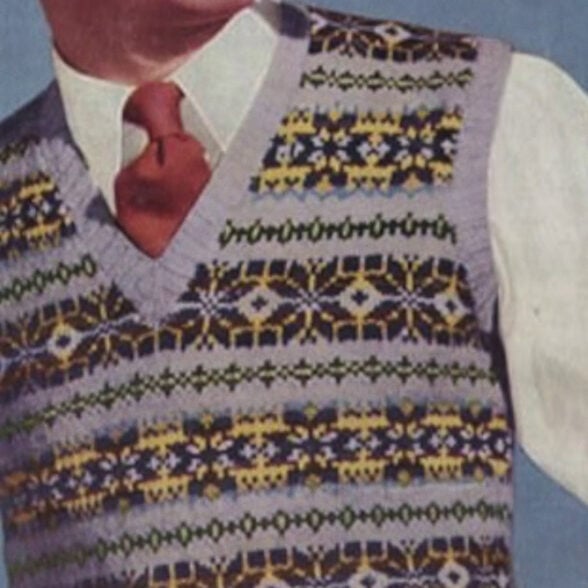
Sweater Vests
Another popular item to bear in mind when discussing waistcoats is the sweater vest. This garment is effectively a sleeveless sweater, as it is knitted and pulled over your head in a sweater style. Generally, a sweater vest bears no opening or buttons down the front; cardigan-syle sweater vests with buttons are more often called “knitted waistcoats.”
The Knitted Waistcoat
Knitted vests are fantastic additions to a man’s wardrobe, especially for casual weekend outfits, because they are soft as a sweater but look more dressy. For example, a nice grey knitted waistcoat with horn buttons is a great way to elevate a Saturday ensemble.
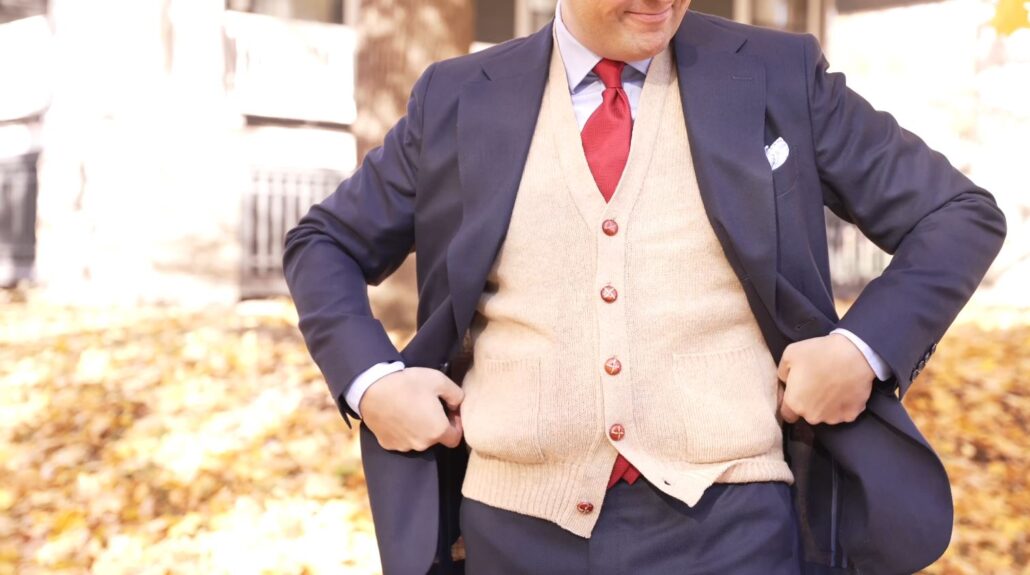
This style is a wonderful opportunity to elevate other casual pieces such as a pair of corduroys or even denim jeans. Add some cordovan footwear to the mix and you’ll be set for a particularly dashing ensemble.
The History of Waistcoats And Vests
It’s possible to trace the waistcoat’s origins back to medieval times, however, the garment as we know it today is an evolution of the clothing first introduced in the 17th Century
King Charles II
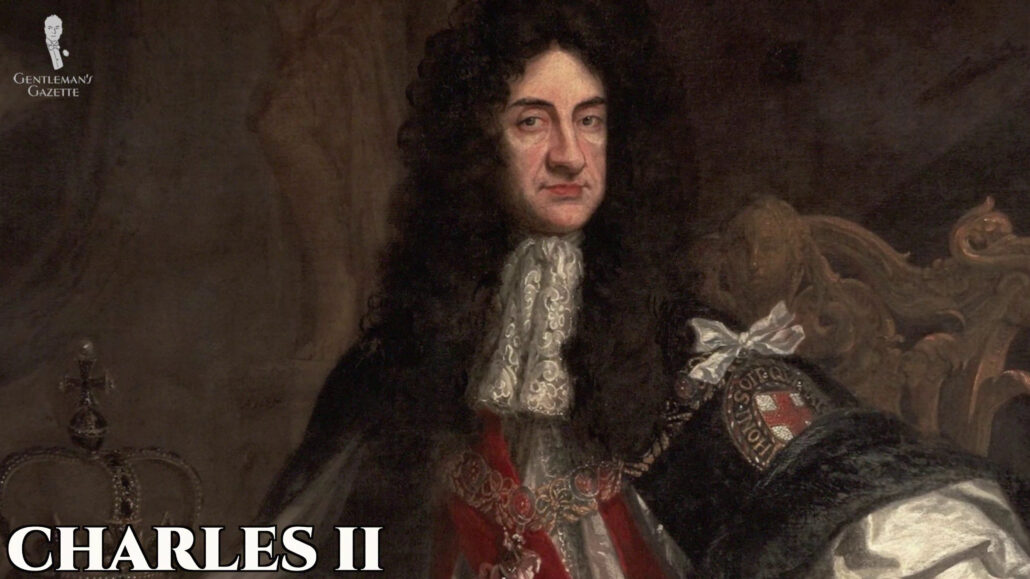
On October 7, 1660, King Charles II of England introduced the vest as a response to the immense popularity of French fashion and dressing at the time. The vest at this point in history would have been as long as the frock coat worn over the top, and those with the means would have beautifully embroidered vests to showcase their wealth.
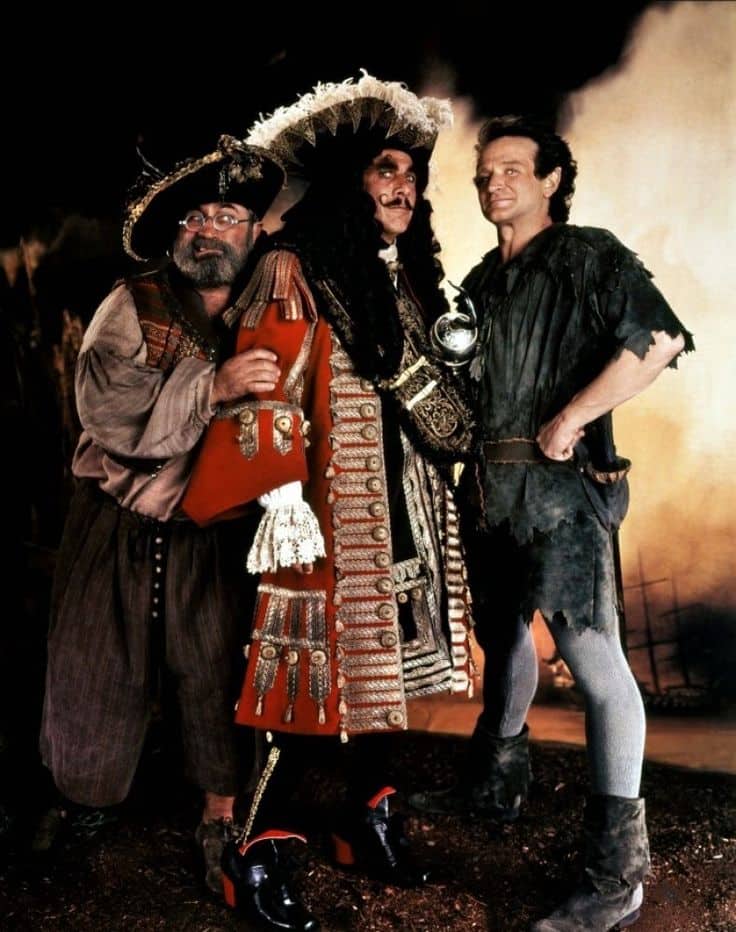
Unlike the vests of today, the garments at this time would have featured buttons running the whole length of the front. As the neckwear of the day was typically tall cravats tied into elaborate bows at the neck, the high buttoning point and standing collar helped draw attention up toward the wearer’s face. The flat lapels as we know them today represent the evolution of this high buttoning point eventually folding over with time.
The Three-Piece Suit Emerges
As vests continued to grow in popularity, the 1700s saw them become slightly shorter than the wearer’s frock coat, but still longer than the waistcoat of today. Some clothing historians theorize it’s around this time that we see the dawn of the term “waistcoat”, as the garment may have been constructed using the offcut fabric from the frock coat – hence the term “waste-coat”, meaning a smaller, sleeveless coat made from the waste cloth of the top coat.
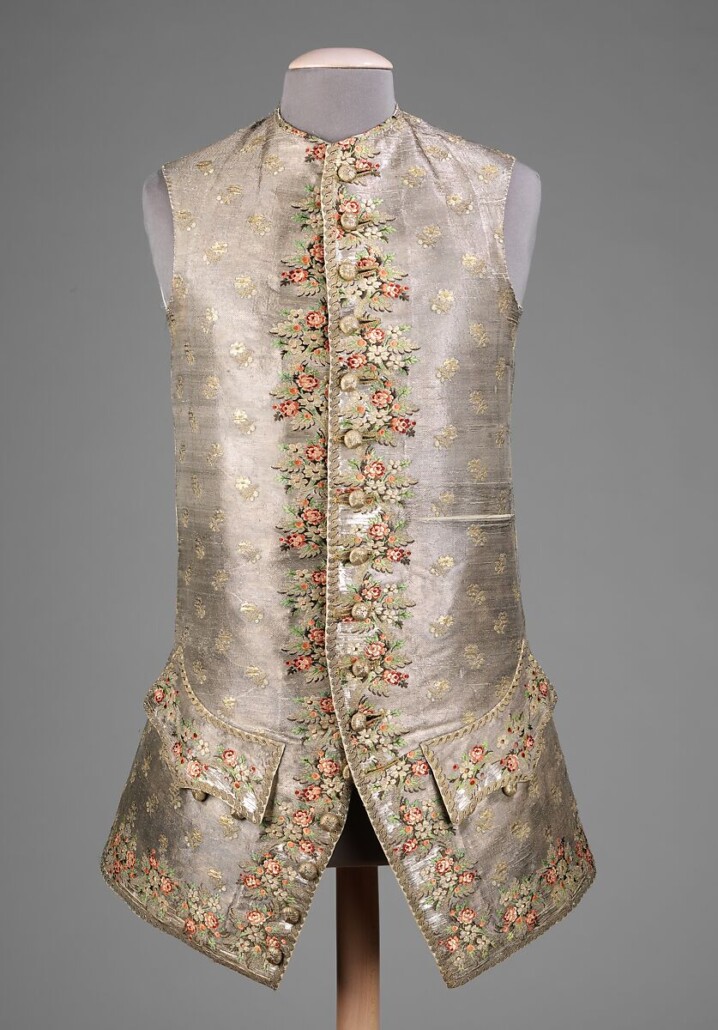
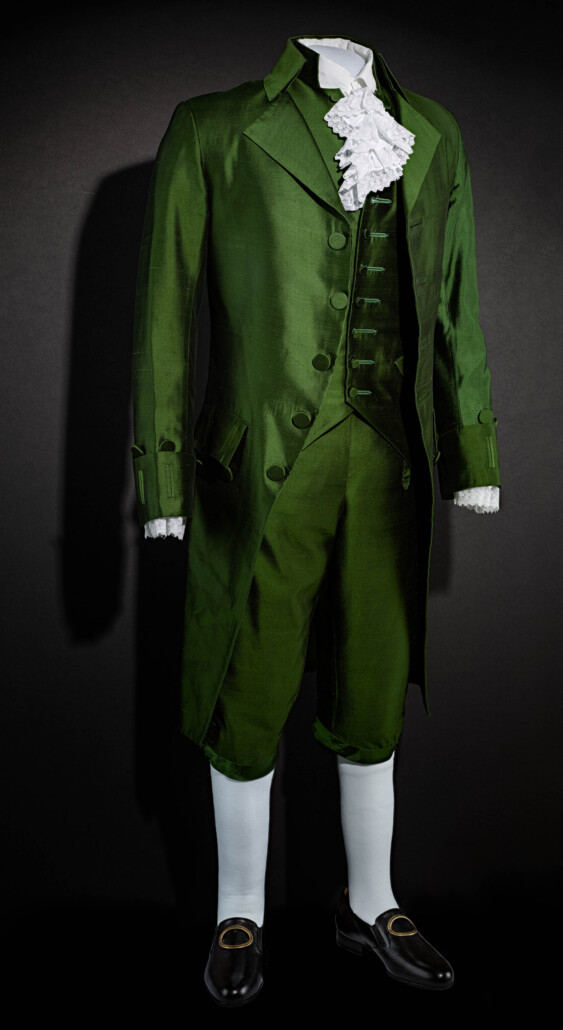
Whether this is true or not, what is apparent is the formation of the three-piece suit. Wealthy gentlemen of the 18th Century took to having their frock coats, vests, and breeches made from the same length of cloth. Not only did this create an imposing image, but it also showcased the wealth of the suit’s owner and their ability to purchase an outfit consisting of such a large quantity of the same fabric.
The Industrial Revolution
As the decades progressed into the 1800s, the vest continued its evolution. Perhaps most notable is the decreasing length of the garment which would now be cut closer to the wearer’s natural waistline. This is the most popular theory for the origin of the term “waistcoat” (as it very literally describes the garment), and the term became most associated with Britain, where it is still preferred to describe the garment today.
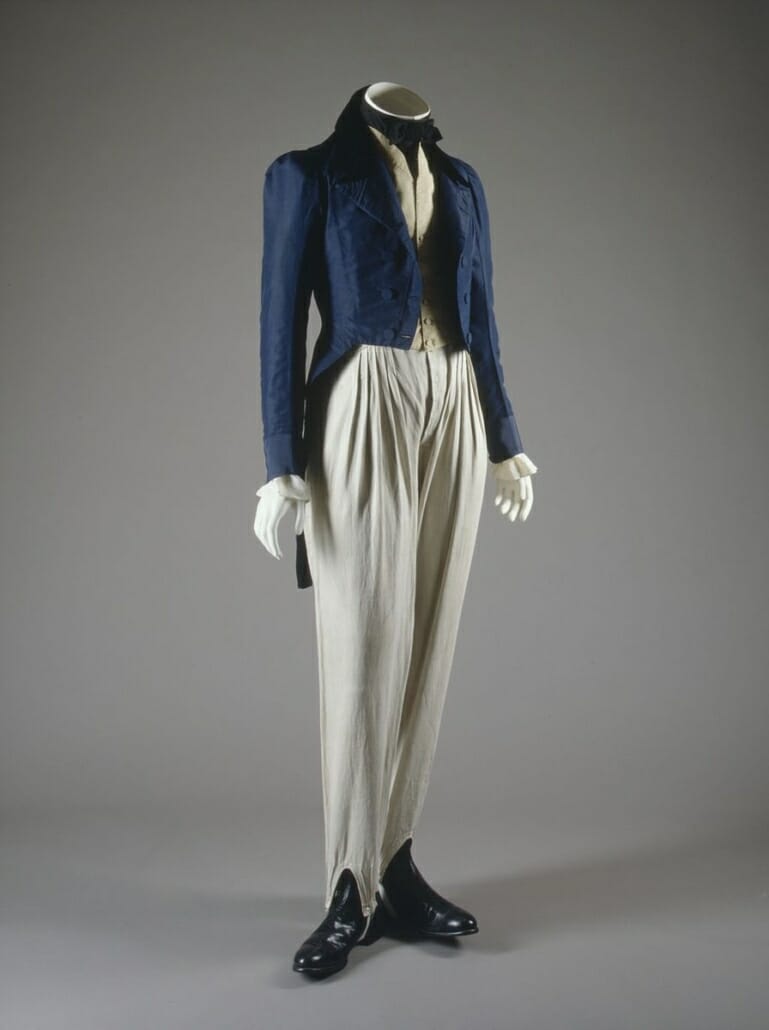
Vests of the 19th Century would be worn by practically all men, however, they were perhaps one of the most notable garments that showcased a person’s class and wealth. Where a poor man’s waistcoat would be made from rough, insulating fibers (or maybe even knitted), a member of high society’s waistcoat saw a return to the elaborate threads and embroidery of King Charles II’s day, albeit with a more contemporary cut.
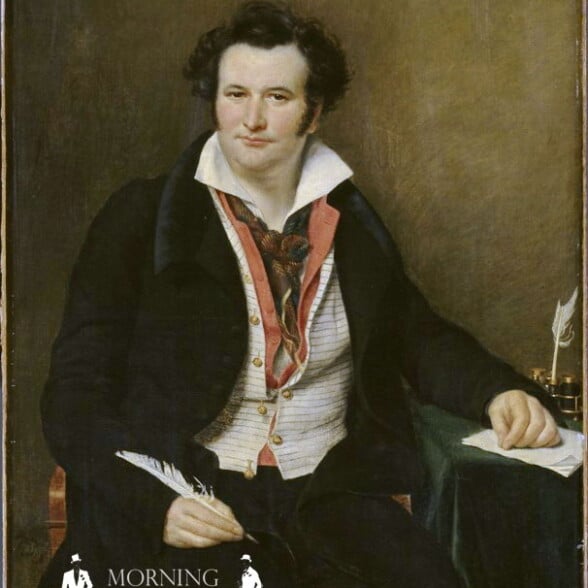
Give ‘im the Slip
Sometimes, gentlemen would even wear two contrasting vests, one atop the other, like Bernard Wolf. Subsequently, vest slips became en vogue, and today you can still see them worn by gentlemen, especially with formal daywear.
The 20th Century to Now
Throughout the decades of the 1900s to where we are now, the waistcoat has continued to be refined.
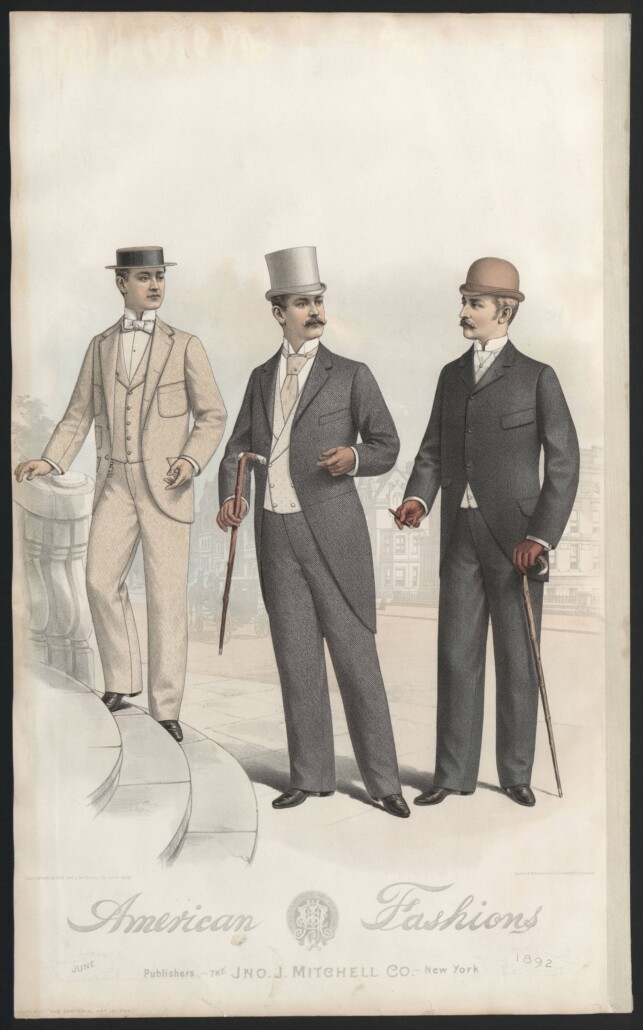
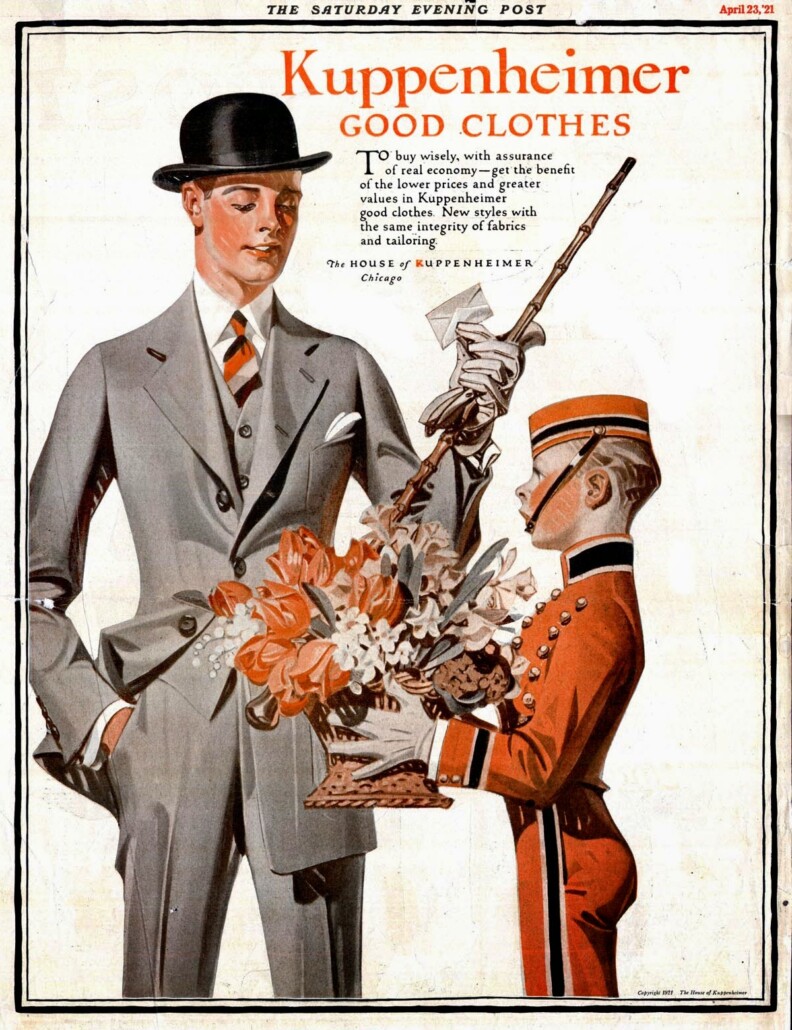
The Victorian and Edwardian periods saw a quietening of the extravagant styles of the previous century, with most men of means still enjoying the “odd” (meaning, non-matching) waistcoat combination. This changed into the 1920s and 1930s, where (much like the 1700s) three-piece suits cut from the same cloth became commonplace.
With the dawn of WWII and heavy rationing, the waistcoat fell victim to the war effort as men returned to the two-piece suit as a standard. Of course, existing three-piece suits were still worn, but the pressures of rationing created a stigma that often prevented men from enjoying their waistcoats for fear of being chastised as being unpatriotic.
As the world recovered into the 1950s, waistcoats remained somewhat absent from many wardrobes. The 1960s and 70s saw a renaissance of sorts, but like many of the clothes during these decades, the waistcoat largely fell foul of fashion trends rather than being an actually stylish addition to a man’s wardrobe. An exclusion from this would be the wonderful three-piece suit worn by Sean Connery as James Bond in 1964’s Goldfinger.

Waistcoats became quite prevalent in the 1980s and 1990s, but sadly not in the way classic style aficionados would hope; leather, ripped denim, and monstrously oversized vests were quite the rage over these years, but we all know the difference between style and fashion, right?

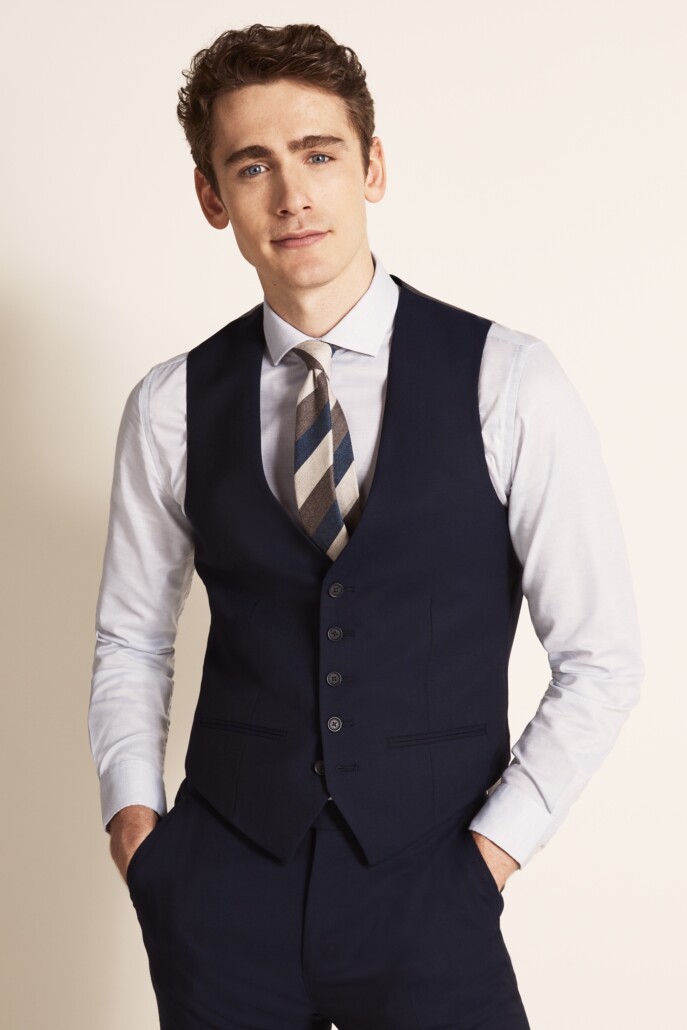
In the new millennium, we have seen a return to the slim, trim fits of the 1920s merged with the mass-manufacturing capabilities that create an ever-changing landscape of designs, fits, and features. But as the fatigue of fast fashion increases, so does the interest in classic, stylish, and (most importantly) wearable waistcoats.
Characteristics of a Vest
If you are in the market for a vest, there are a few points you should pay attention to:
Waistcoat & Vest Characteristics
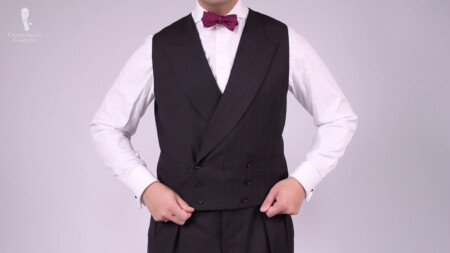
Length
It is very important to choose the correct vest length for your trousers. As a rule of thumb, the vest should always cover the waistband. Naturally, this will depend on your height, torso length, and the rise of your trousers. Also, many men’s waistcoats are designed for the bottom button to remain undone. This means the front of your vest has to be long enough so you won’t see any shirt fabric.
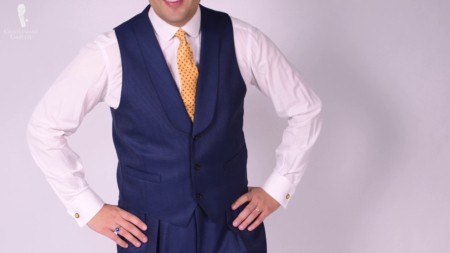
Armholes
Unlike with jackets, it is not desirable to have small armholes because it doesn’t have any sleeves attached. Larger armholes are better for vests so that it will not restrict the motion of your arms at all, therefore increasing the level of comfort you feel when wearing your waistcoat.
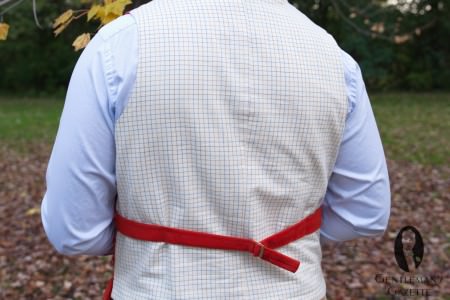
Lined Back
A select few styles of formal evening waistcoat come without a back, but most waistcoats have a lined back. Sometimes it is made out of thinner viscose or silk, other times from cotton but rarely is it made of the same fabric as the front since that would be too heavy. Moreover, it is important that the back is rather smooth so your jacket will hang and drape nicely.
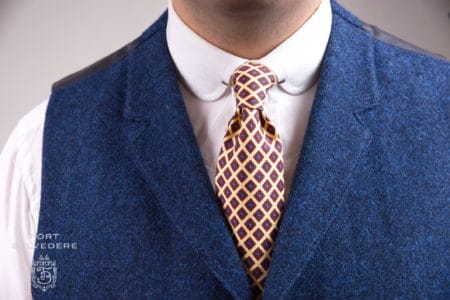
Lapels
Whether you choose to incorporate lapels on your waistcoat is a matter of personal preference, but do keep in mind that a waistcoat with lapels will typically be viewed as more formal than one without. As for lapel styles, you could choose to reflect that of your suit jacket with a notch or peak lapel, or you could even go with a shawl lapel. Keep in mind that the latter option is usually more common for dress vests, but can work for day vests too.
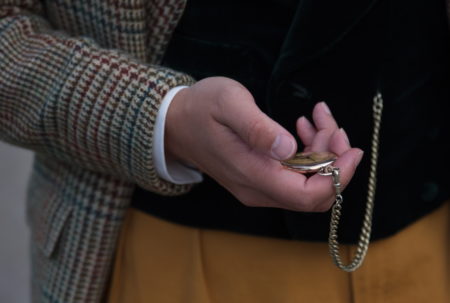
Pockets
With their practical origins, many waistcoats will bear some form of pocket arrangement. Historically these would have been used to hold any number of everyday items from a fob watch to a pair of spectacles, and you will likely find a similar use for waistcoat pockets nowadays – perhaps a pair of earbuds! Take a look at our guide to pockets in menswear for more information.
Waistcoat and Vest FAQs
What is the difference between a vest and a waistcoat?
Technically speaking, there is no difference between a waistcoat and a vest. The difference is purely linguistic, with the term “waistcoat” being preferred in Europe (particularly the UK), and “vest” being used more in America. In British English, the term “vest” can also refer to the sleeveless undershirt Americans call a “tank top,” but in the world of tailoring, “vest” and “waistcoat” can confidently be used interchangeably today.
Why do Americans call waistcoats vests?
Waistcoats were actually called vests to begin with, and the term “waistcoat” came along later. Americans began to eschew the British term “waistcoat” as early as the time of their revolution as a further step toward independence.
Do men still wear waistcoats?
Many stylish people still wear waistcoats today, both individually and as part of a three-piece suit. The trick is making sure the waistcoat fits you and suits your outfit.
When to wear a vest with a suit?
A vest can be worn with a suit any time you like! Depending on the style of vest (formal or casual), you will be able to dress up or dress down an outfit. This theory of dressing is called spezzato.
What is the point of a waistcoat?
A waistcoat has several useful features. It creates a clean, uninterrupted line that follows your trousers up, thus elongating your body. Its V-shaped neckline helps frame your shirt and tie nicely. And a waistcoat can be seen as another layer of warmth if needed.
Is it okay to wear a waistcoat without a jacket?
As the 21st Century sees many people adopting a casual mode of dressing, a waistcoat worn without a jacket will typically be considered okay in most settings. The best way to wear a waistcoat without a jacket is in warmer climates, where this look makes the most sense. Try a lightweight linen waistcoat in order to capitalize on this cool and casual classic look.
Why do you leave the bottom button of a waistcoat undone?
It’s widely believed that due to an expanding waistline, we can thank England’s Edward VII for this bit of waistcoat etiquette. Naturally, if a member of the Royal family does it, the kingdom will surely follow, as you can find out about in our article on the subject.
Why Wear an Odd (Non-Matching) Vest?
You may wonder why you would want to invest money into odd vests if you could just get a three-piece suit. The advantage of odd vests is that they expand your wardrobe in size and flexibility, without taking up that much additional space.
Vests Offer Versatility
As an example, say you only have 2 jackets and one suit in your closet. You now have the choice to invest in just one more jacket, or you invest in 3 odd vests – go for the odd vests, and you can now create 27 different outfits! A jacket alone would have only given you four possible outfits.
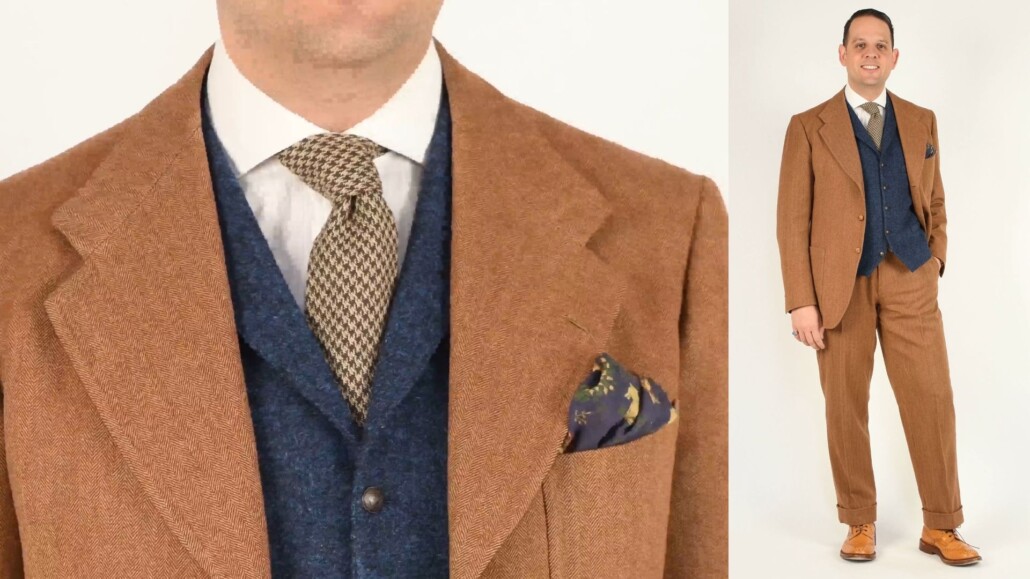
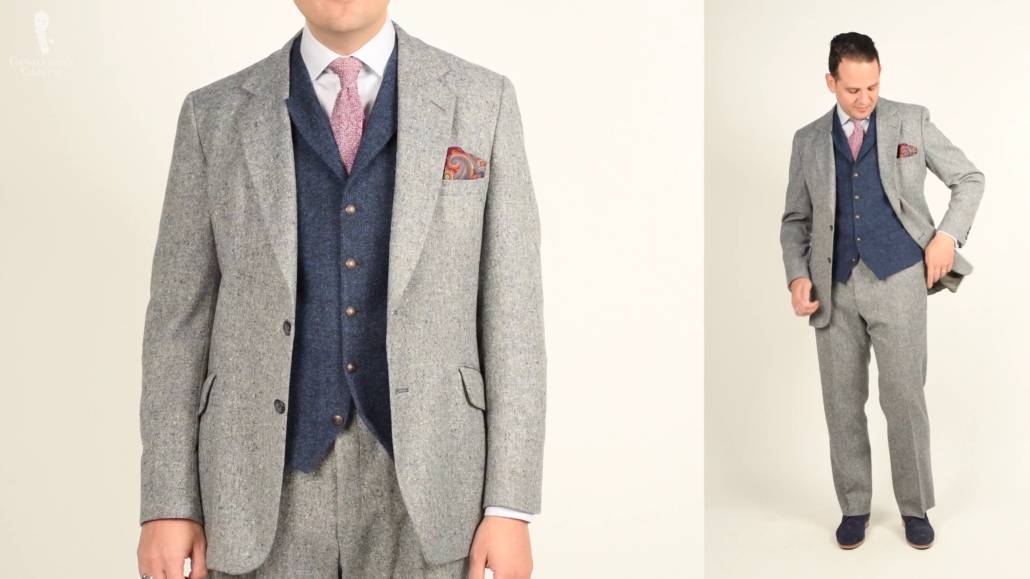
So, contrasting odd vests can have a substantial impact on your wardrobe without breaking the bank. Even if you have a large number of suits and jackets, a few odd waistcoats are the key that will allow you to create a huge number of new outfits.
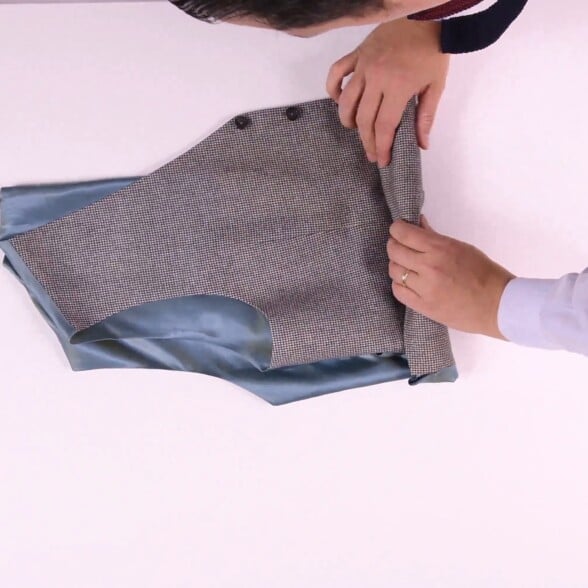
The Vest Benefits
Not only will a waistcoat offer you a layer of warmth, but it also gives outfits a very different look. When traveling, or with a limited wardrobe of 3 suits and 3 odd vests, you can create a total of 12 outfits; 3 without vests, and 9 with vests! Perfect for long-haul trips and economic wardrobe solutions alike.
Vests Are Easy to Tailor
Without a doubt, suit jackets and blazers are complex garments to create, even at the entry Ready To Wear level. This means they are often the most time-consuming (therefore expensive) element of an outfit to create.
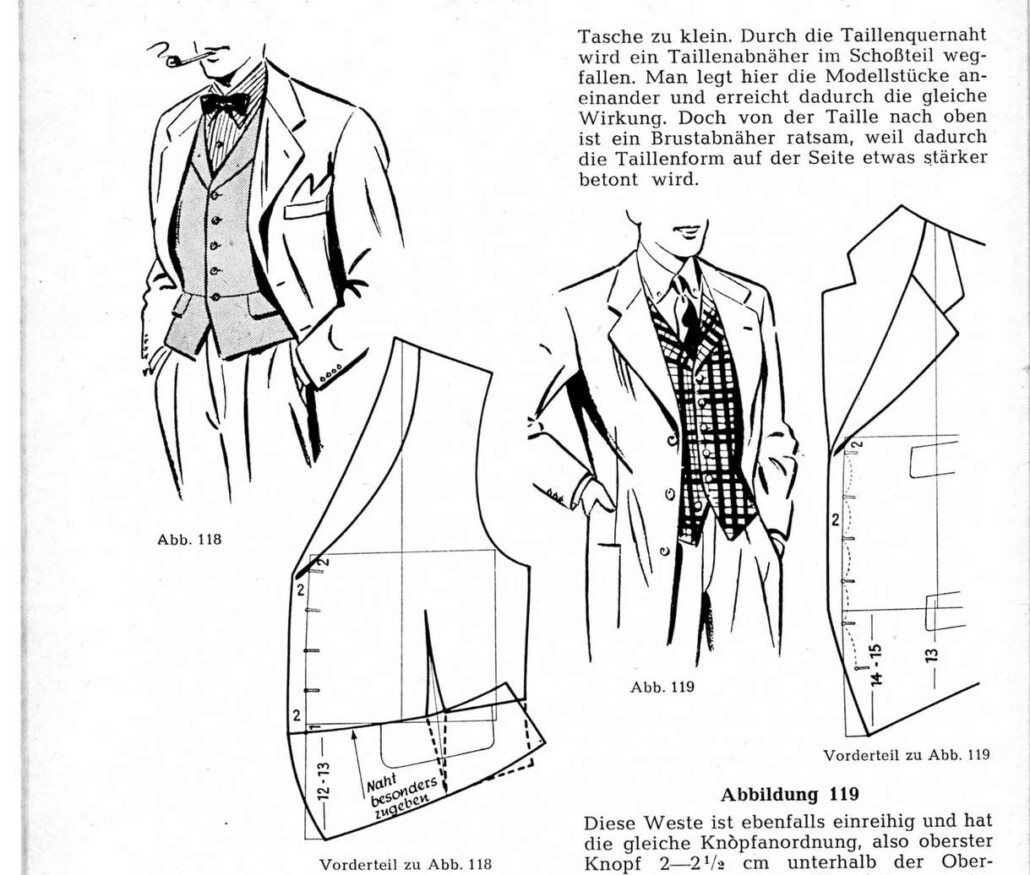
Waistcoats, however, possess simpler patterns and require less fabric overall when being made. This makes an odd waistcoat a great option if you’re looking to enter the world of bespoke craftsmanship, but don’t want to spend a lot of money on a larger project (like a suit) before testing the waters with your chosen tailor.
Even if you choose a Ready To Wear waistcoat, the cost of getting it altered to fit you should be minimal, as it’s typically just the side seams than need to be adjusted. Paying this additional $20 to $30 (on average) will result in a waistcoat that fits you like a dream, and looks fantastic.
What alterations are too tricky?
Essential Waistcoats and Vests For Your Wardrobe
The Lighter Colored Odd Vest
If you only invest in one odd waistcoat, go for a solid-colored vest that is a lighter tone than your suits, pants, and jackets. Simply put, this style is very versatile and will almost always look magnificent.
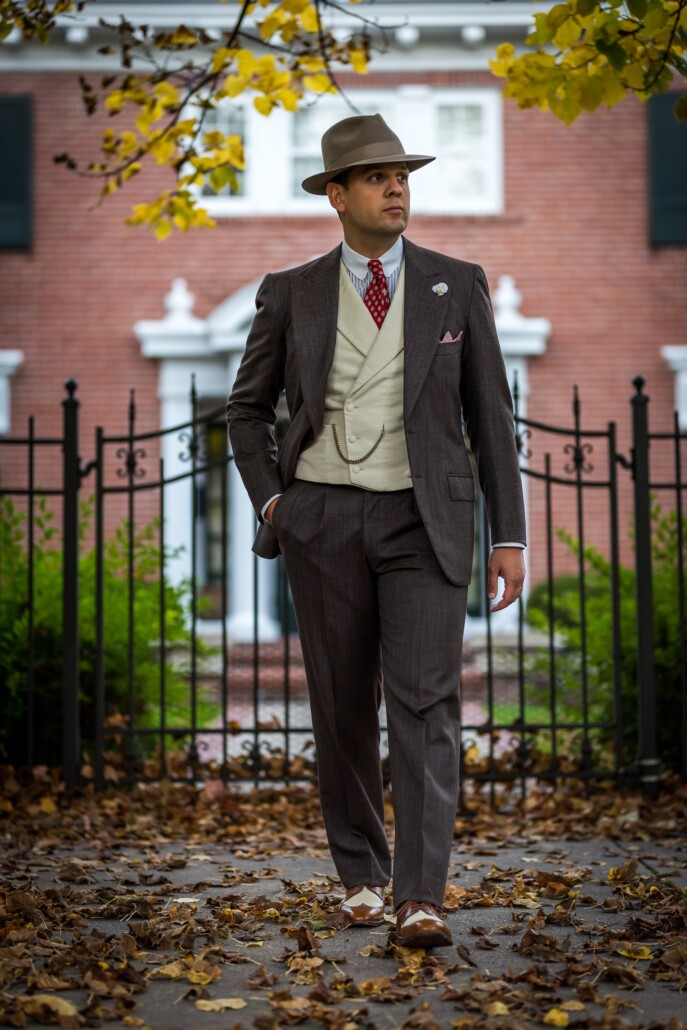
Historically, dapper gents would wear white gilets or vests with their daywear, and even today a white vest in either flannel or worsted looks fantastic with navy or charcoal suits. At the same time, white stains very easily, so tones in natural sandy browns, buff, or dove grey work very well for a bit of 21st Century flexibility.
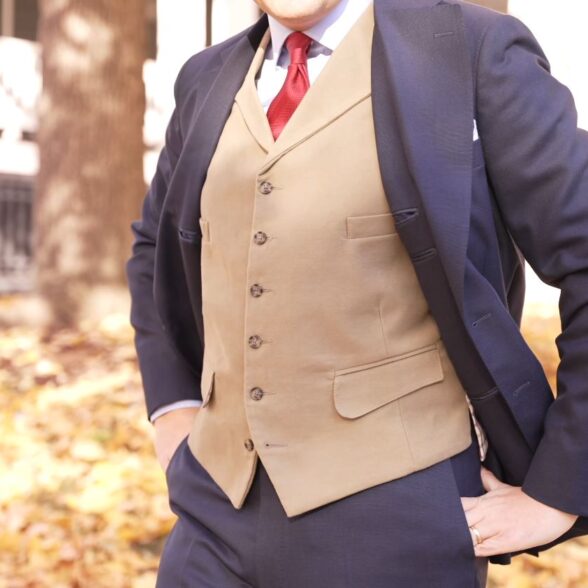
Beautiful Buff
If you get a single-breasted vest in buff or sand you can wear it as a morning waistcoat or with a stroller suit, a business suit in solids or pinstripes, and even casually with sport coats and tweed suits, too.
The Double Breasted Vest
Just like with suits, double-breasted waistcoats are more formal than their single-breasted counterparts (and therefore aren’t generally worn with tweed suits and country clothing). Also, when you wear them, make sure that they are cut proportionally to the jacket, meaning that the body of the vest (as opposed to the lapels) should not be visible when the coat is buttoned.
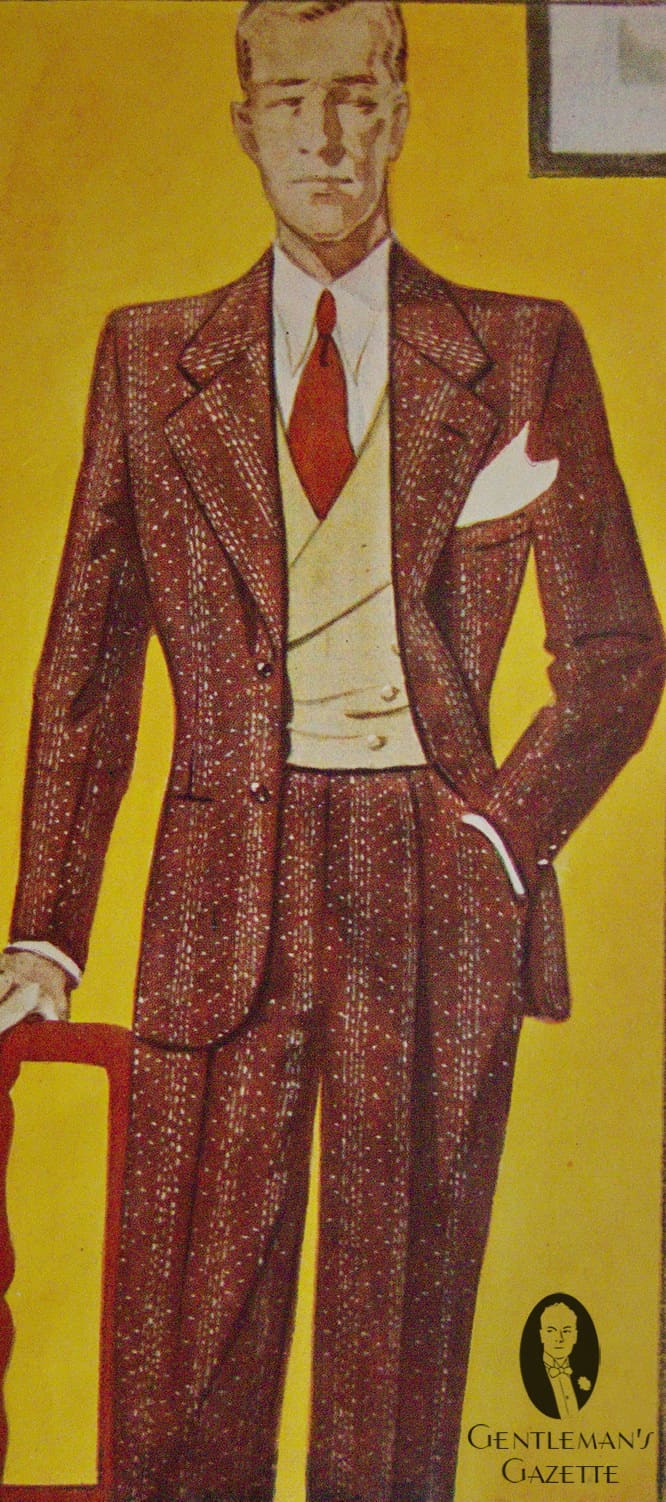
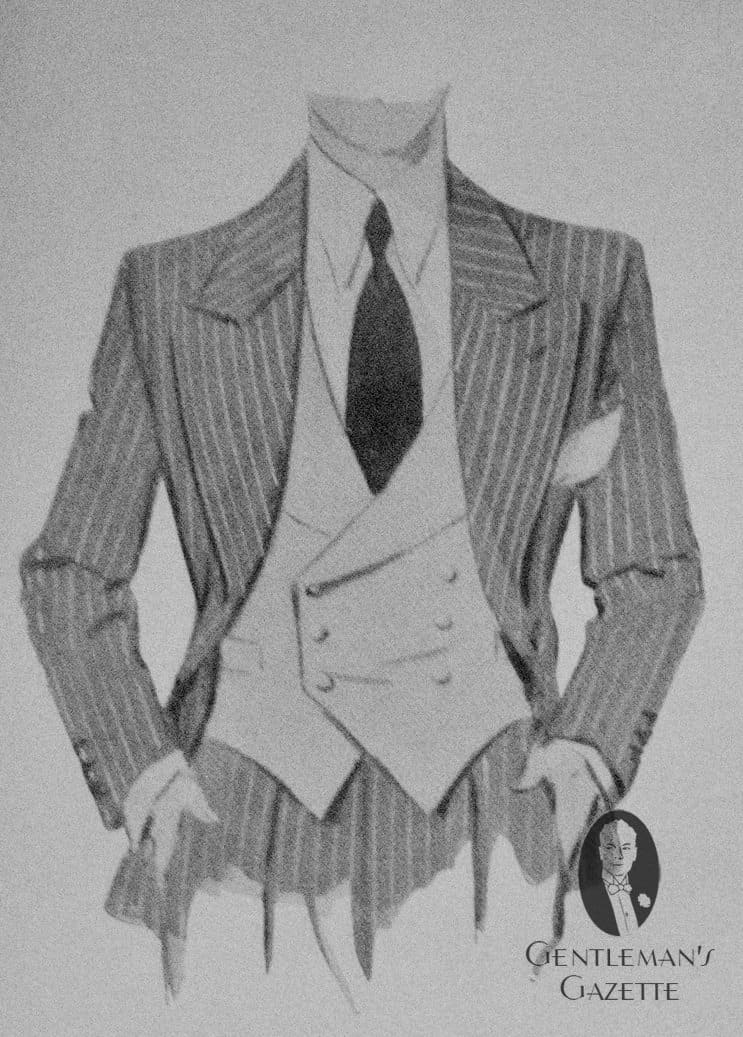
Most classic double-breasted vests are seen in grey, buff, yellow, and light blue, but sometimes also in salmon or pale green. Most of the time, you will see that they have a 6×3 button configuration and a peaked or shawl collar lapel. However, sometimes, you also see 8×4 or even 10×5 waistcoats, but usually, these are bespoke. If you go that route, make sure that the jacket has a high buttoning point so the top of the vest doesn’t show too much when the jacket is buttoned.
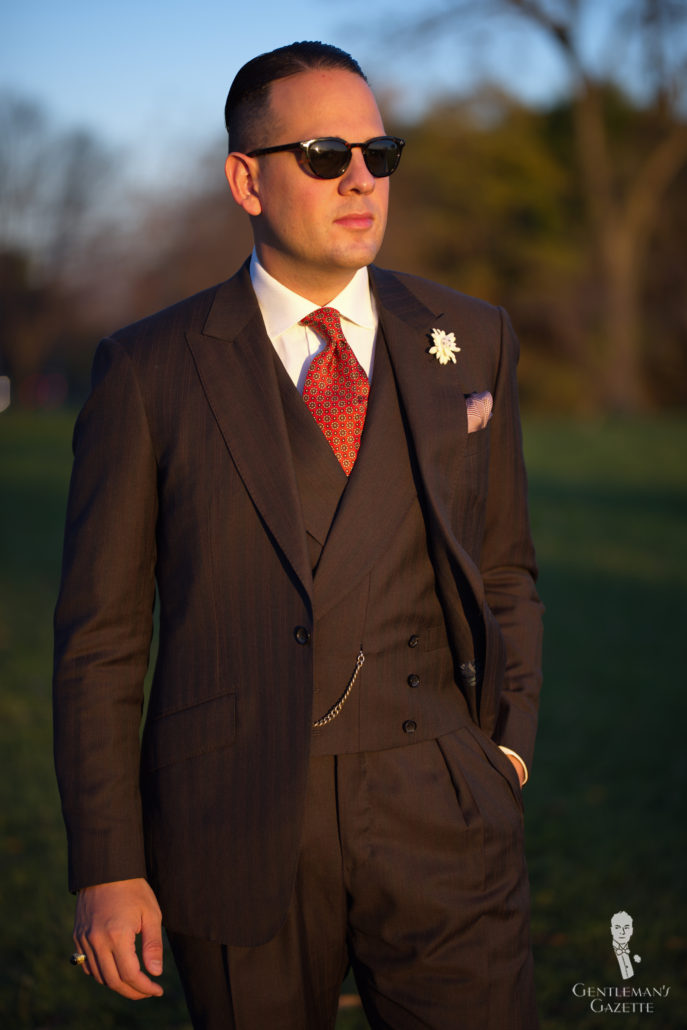
Another point to note is that double-breasted waistcoats are usually straight or slightly curved at the bottom, not pointed like single-breasted vests. As such it is even more important that it has the right length to cover your pants’ waistband.
Vests For Business Suits
If you want to wear an odd vest with a business suit, go with muted colors and simple textures. For example, white or gray linen, and buff or gray worsteds work well with navy and charcoal solid and striped suits. Of course, the simplest and safest vested look with a suit is a three-piece ensemble in matching cloth.
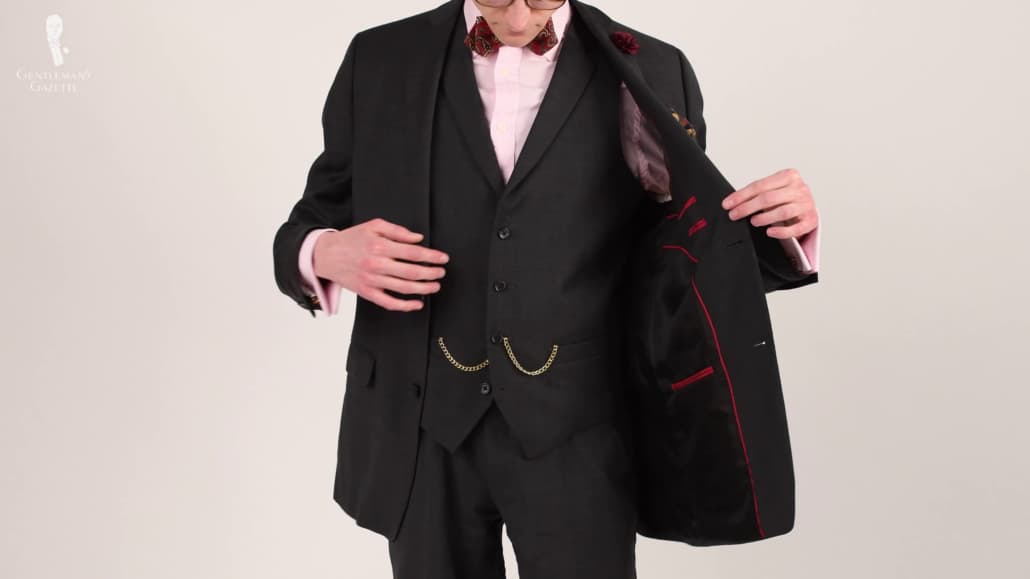
Dark burgundy or a light blue waistcoat can also be a nice choice here but do avoid going for a black vest as this should only be worn with eveningwear.
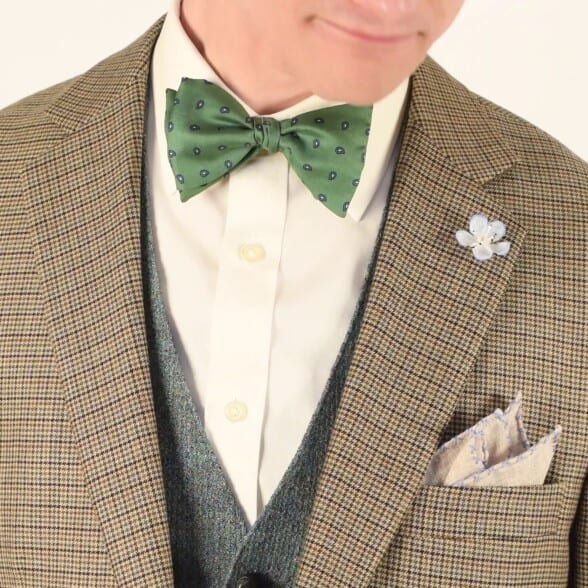
Getting Down To Business
Even if you don’t work in a white-collar office, leather or moleskin vests aren’t good partners for business suits. While not quite as severe, this also holds true for tweed waistcoats, as there would be too much of a formality clash. Also, skip bold patterns and shiny buttons – after all, you’re at work, not showcasing the latest collection on a runway!
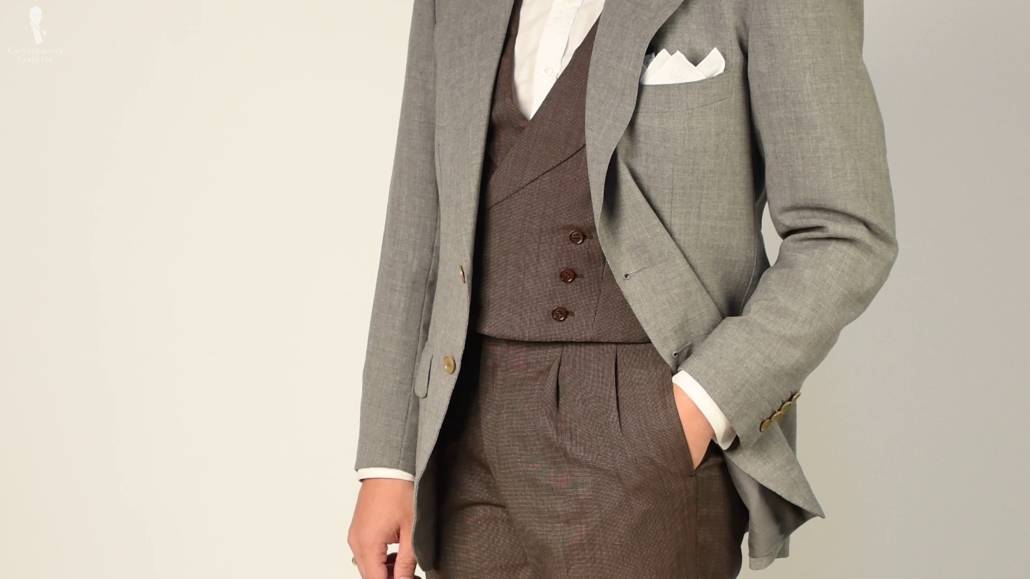
A great option for a business suit vest is to swap out an element of a three-piece suit for a contrasting item. For example, in this picture, you can see the vest and trousers of a brown pinhead suit paired with a solid grey jacket. The key here is to pair a subtle pattern with a solid, like a Prince of Wales vest with a solid jacket, or a chalk stripe suit with a solid vest. Experiment until you find a combination that really works for you.
Casual Waistcoats
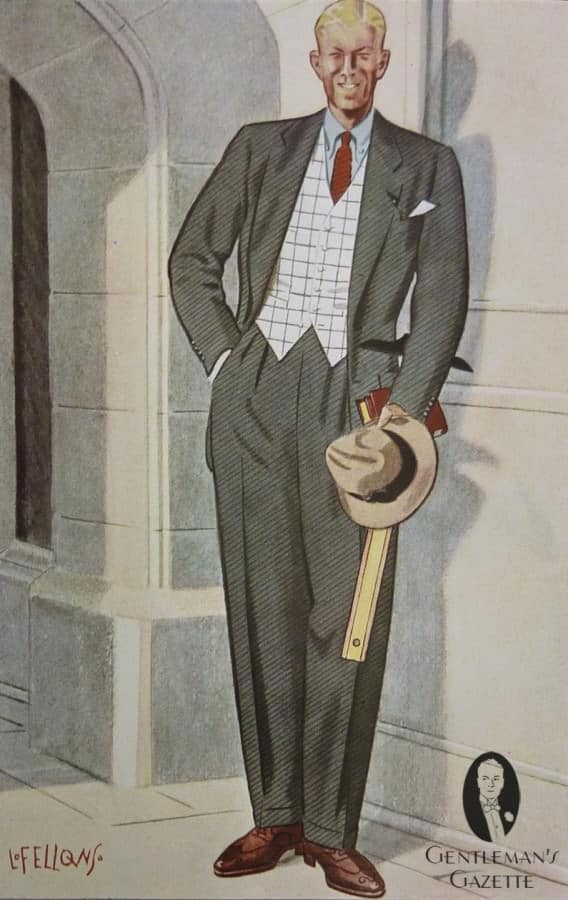
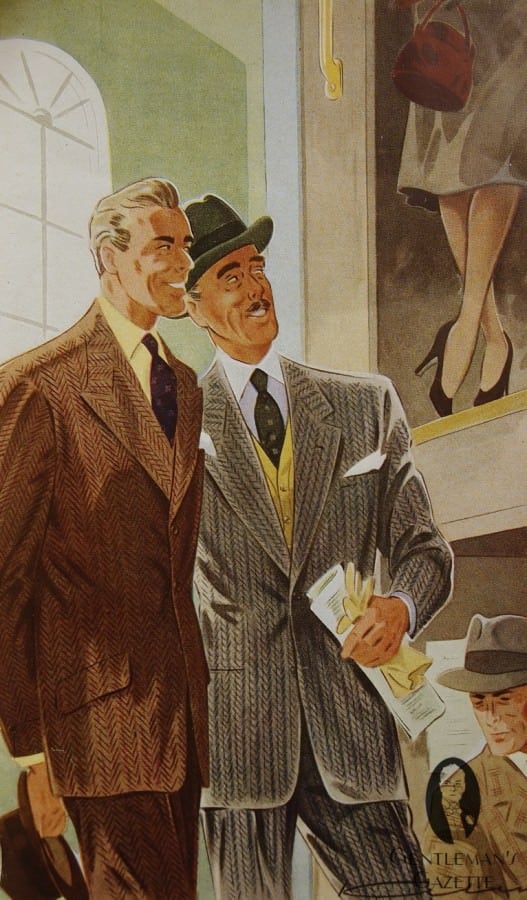
If you want to wear and combine waistcoats casually, there are very few limits! You can go with basically any material, color, or pattern and combine it with your outfits. You’ll likely find it best to avoid combinations that aren’t overly flashy, but sometimes you might surprise yourself – for example, a bright yellow vest may work really well with a sky-blue linen suit.
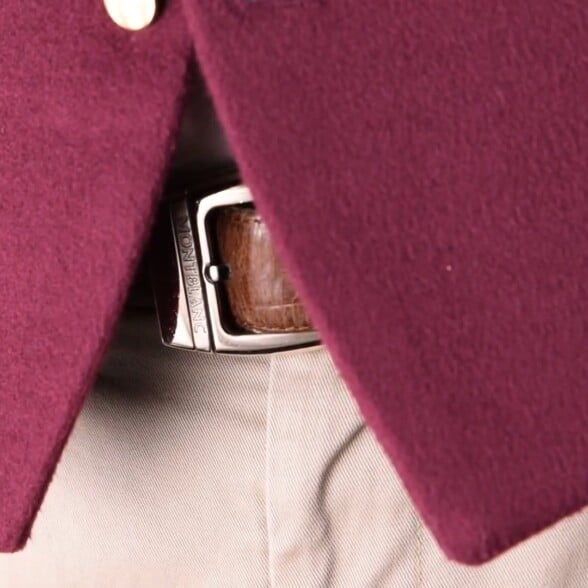
Waist Not
As mentioned in our 25 Tips to Dress More Elegantly, when you wear a vest, always skip the belt in favor of side adjusters or braces for your trousers. A belt will always make your vest stand away from your pants’ waistband, which looks bulky and crowded.
Tattersall Waistcoats
Tattersall refers to English vestings made with striking plaid designs in all kinds of color combinations. Usually, the background is beige or eggshell and traditionally they were made of a medium-weight kersey cloth.
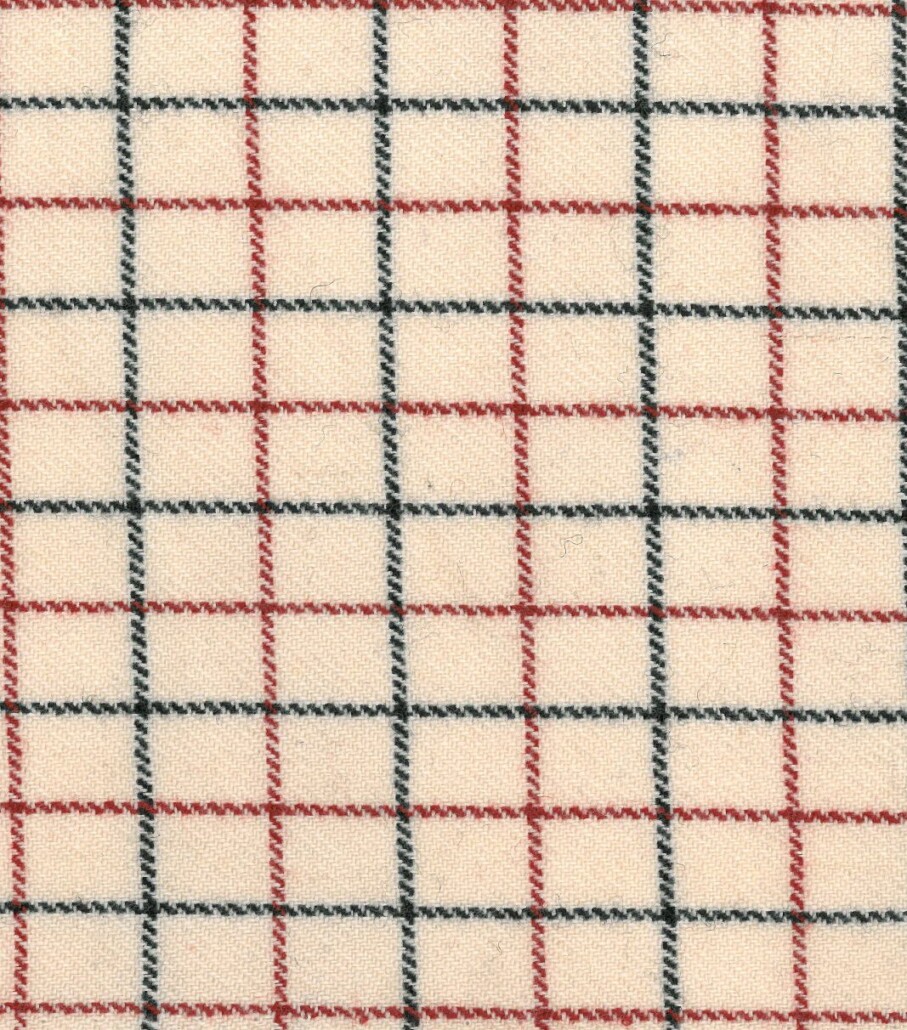
Today you can find all kinds of weights and it is often used for country shirts as well with slightly smaller plaids. It was named after the Tattersall horse auction rooms in London which were established in 1766. In the 18th century, horses were covered with checked horse blankets, and it is believed that some people borrowed these designs to make them into waistcoats.
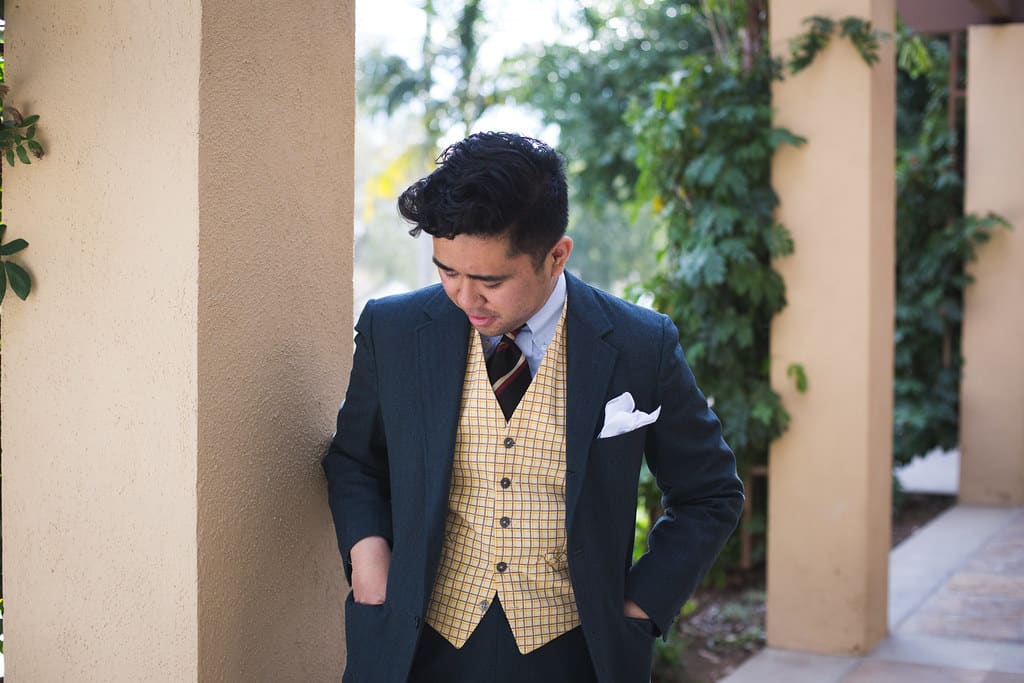
It is a very classic design and it can be paired with all kinds of jackets. If you want to go with a checked jacket, make sure the pattern is considerably larger or smaller than the vest, otherwise, it looks odd.
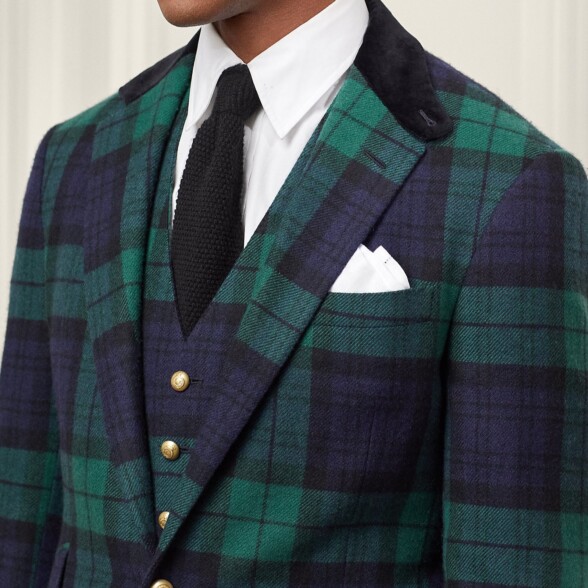
Tartan Vests
Tartans have their roots in Scotland and some people like the pattern for the holiday season and evening events. Most of the time, tartan vests are rather bold and so it pays to combine them with solid jackets to create a harmonious balance
Evening Waistcoats
At the highest end of formality is the evening waistcoat. These can vary in style depending on the dress code, namely depending on whether the invitation is for a black-tie or a white-tie event. While an evening waistcoat might not be necessary for a black-tie event, it is absolutely essential for a white-tie event. Head over to our in-depth eveningwear guides to find out more about the differences between these styles of vests.
Wedding Waistcoats
Typically woven from jacquard silk, these waistcoats are designed to wear at weddings, and maybe even at prom. Unfortunately, the majority of these styles on the market today are mass-manufactured out of low-quality materials. They’re designed to be worn infrequently, and as such, they rarely fit well or look attractive.
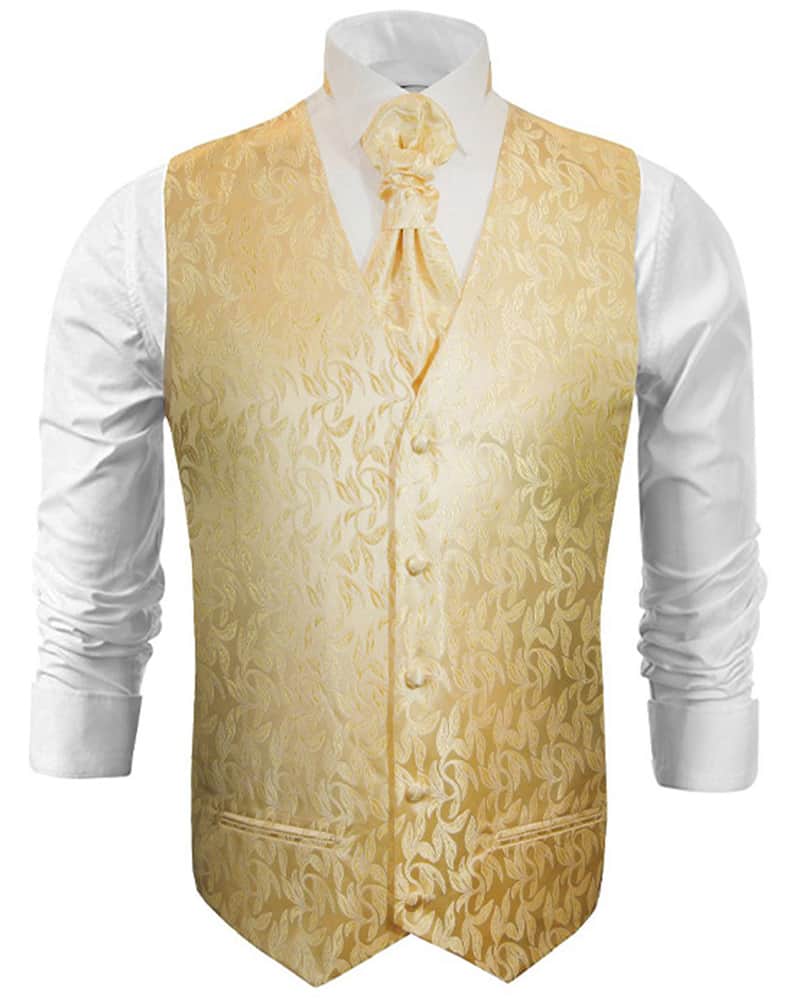
Although they may bear a passing resemblance to the decorated waistcoats worn throughout history, these vests will cheapen your outfit with overly loud, shiny designs that won’t flatter you. Avoid these wherever possible.
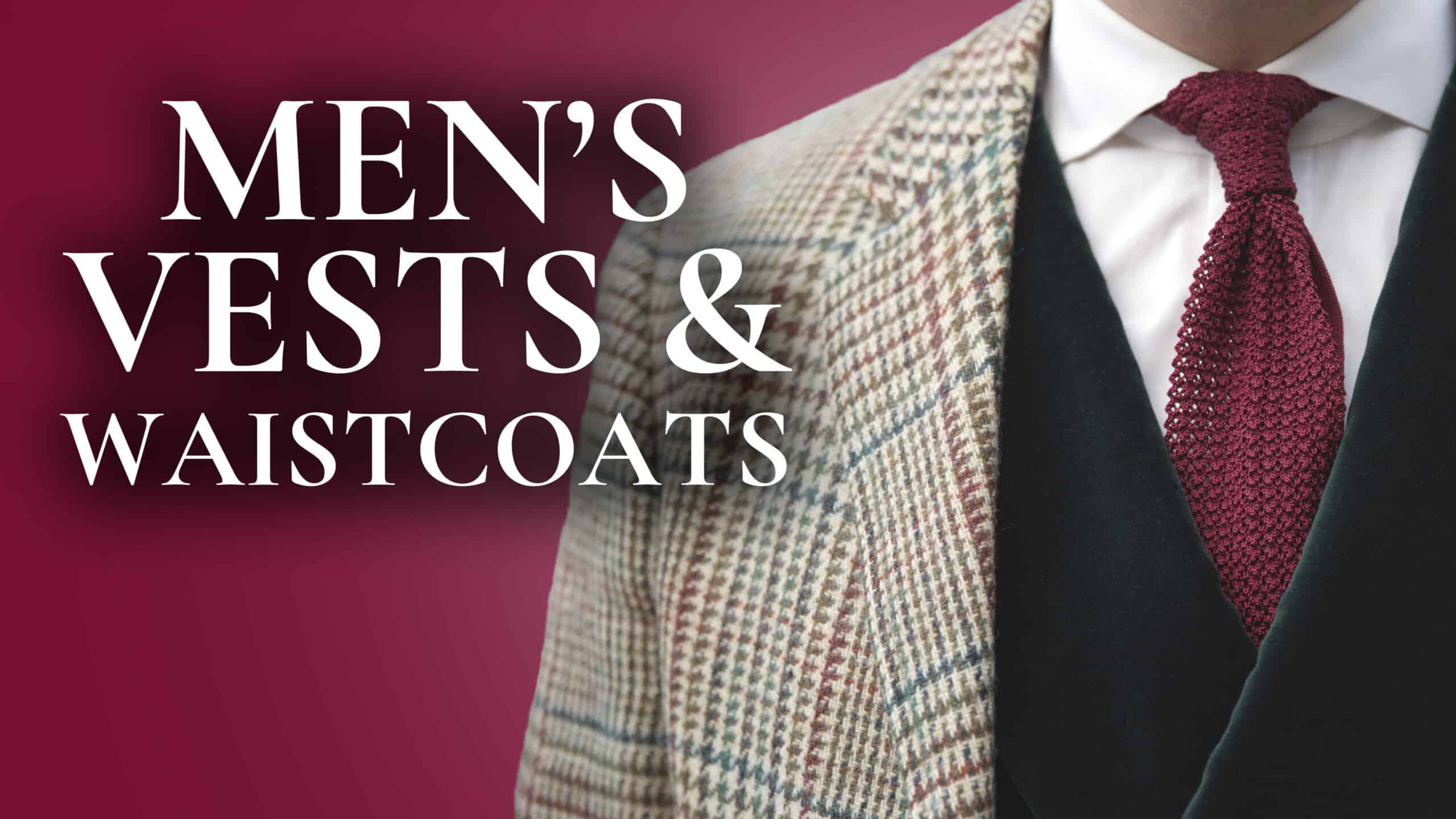


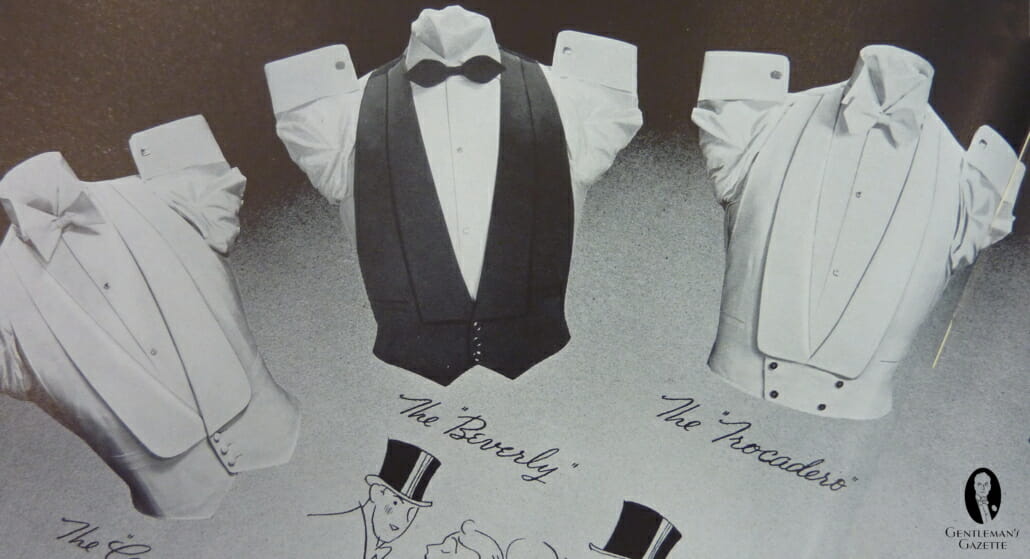
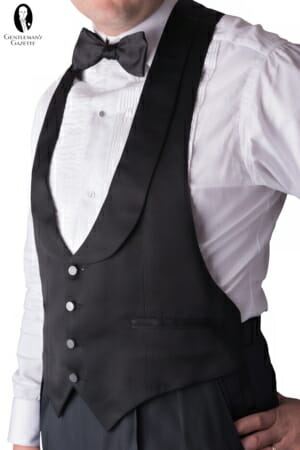
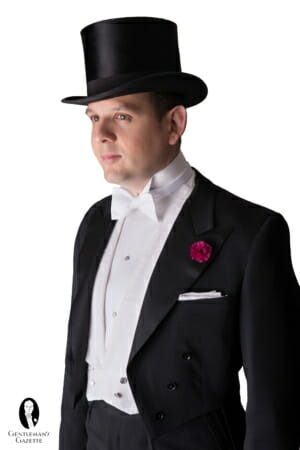
I love odd vests! Unfortunately I live in Southern California and it very rarely gets cold enough to warrant one. Pity, that.
First, thank you for your efforts to promote civility as you do. I have been retired from a professional position for 5 years & live in the mountains of Virginia, in a rural community where the dress is extremely casual/functional. While I seldom wear a tie now, I do occasionally wear vests & sport coats. While your article addresses the bottom-button issue with a waistcoat, I wondered about leaving the top-button undone as well, when not wearing a tie. I believe that this complements the open shirt collar. Your suggestions?
Traditionally, a vest necessarily needs a some form of neckwear but if you like to wear it casually, I don’t see why you can’t leave the top button undone if you think it looks pleasing.
I frequently wear the odd vest as I feel it gives more interest than the all matchy matchy look.
It certainly does!
In the first reel of “Goldfinger”, you can James Bond/Sean Connery wear an odd vest with suit to dinner with “M”.
Great article, and the weather here in the UK is just turning so timely. Plenty of options for me already within the wardrobe, but will be on the hunt for more over the coming weeks. Keep up the good work!
Thank you!
Vests/waistcoats are my favorite apparel item.
I am partial to ones with lapels. I have many odd vests. The article tells me I have been doing it right. Fortunately, since I love vests, I am “cold blooded”, meaning I adapt to them even in warmer weather. Always enjoy your articles. On that note: you wrote an article on pea coats. I would like to revisit that article. I have a vintage pea coat and wish to date it. It has corduroy pockets. I have not been able to locate the article on your site. I especially like your historical references.
Jay, I am not sure what you wear searching for but “peacoat‘ works well.
I’m personally big on odd vests in the winters and thank you for this fantastic article.
A sizeably variety of fine hand-knitted cardigans and V-neck vests, makes interesting statements in muted as well as boldly contrasting colours. The odd waistcoats include tattersall, houndstooth as well as tweeds in vibrant checks.
Pictures please!
Odd vests are a great addition to any tweed. it brings it to
another level.
Agreed
Great read. Odd vests are a staple for me and I’m a bit surprised that more men don’t wear them. I can wear a vest for three seasons here in Virginia. Wish they weren’t so hard to find.
I wish I could find odd vests with the back material the same as the front (rather like a light gilet) so I could wear them round the office. I don’t like the usual type much with the coat off and tend to wear sleeveless cardigans instead. Who makes these? Or would I have to have them made up for me?
Patric Hollington in Paris makes odd vests and sleeveless jackets which might be just what you are looking for. I have several and find them excellent for the office.
Thanks for sharing Malcom.
Thanks Malcolm. Some nice things on his site but the ‘waistcoats’ are more like gilets than vests. I don’t think they would sit comfortably under a jacket. I used to have a very nice black leather waistcoat that I had made in Tunisia about 20 years ago and for a long time used its fit as a guide to if I was increasing weight or not. I lost that battle many years ago, one of my sons ‘stole’ the vest and sewed several ghastly patches onto it. I am going to Morocco next month and may have another made up.
Last evening I watched an old episode of Jeeves and Wooster (the TV show with Fry and Laurie in the lead roles) and noticed Bertie Wooster wearing a tweed jacket, flannel trousers and a vest. As a great admirer of 1920s and 1930s male fashion I started to search the internet for examples of the history of such a look – suddenly in my inbox appeared your newsletter!
This is one of your best articles – balanced, options for everyone, great images. I am visiting London in January and will be visiting Cordings!
Best wishes
Mark
Thanks a lot for this outstanding and most enriching guide. I wouldn’t have got the idea of wearing an odd vest with a business suit before reading it, but it seems like a good idea.
Greetings across the Atlantic and to all readers
Re-read “Odd Vests”. What is or does ‘Siye’ mean or supposed to be? I tried looking on line for a definition for the word and none is found… That was my gripe. I know some times we blow a word but news journalists are the worst for that. I see you as a perfectionist and wouldn’t let something like that slide by….I don’t mean to insult you but it just makes me nuts when I catch things like that… As I said in my first email, I really like and do read all the news letters you send out looking forward to each and every one….Edwin…
Edwin, I am German and use a German keyboard configuration at times, where the y and z are exchanged. I have never read a book that had not at least one typo. If it drives you nuts, I am sorry, but if we really wanted to get rid of all typos on our website, we’d have to pay someone $15,000, and that’s an investment without any significant returns.
That said, of course, I want to have as few mistakes as possible and someone always reads over it again. If you would like to offer your services, let me know.
Really enjoyed your article, i have several vintage waistcoats which i like to wear whenever i can, in regards to the bottom button being undone the tradition goes back to victorian/edwardian times.
I love your article about odd vests, but there was only one picture where the vest was combined with a bow tie.
Is vest and bow tie nowadays a “no go”?
Absolutely not John, you can combine it with bow ties just as well as with neck ties.
Two hazards for those unused to wearing a weskit are fit and cloth weight.
The cloth weight is important, so the waistcoat is not covered over with a jacket of a lighter weight material, and so is over-balanced. The doeskin variety, such as those from Cordings, are splended (even if the Cordings’ offering is disappointingly limited to five-button only) really need an equally weighty or heavier tweed or similar over them.
Fit is more of an issue. The wearer must know he has on a waistcoat – it needs to fit close all over – and sit neatly and snugly into the small of the back and around the waist. Current trends are for loose (if not actually shapeless) garments, and too many men do themselves an injustice by fearing close, form-fitting waistcoats.
Once the weskit habit has been formed, and the wearer has overcome his misplaced self-conciousness, it becomes one of the gentleman’s greatest opportunities for self-indulgence, with styles and fabrics for every mood or occasion.
Let’s hope we see more of them!
I started wearing odd vests a couple years ago and now enjoy looking for vintage ties to go with them. In my circle of friends nice jeans finish the effect. I recently discovered your website and I do enjoy it.
As a doctor we use the labcoat for more time that even our jackets, and the sweather is part of my everyday outfit, is there a rule about the contrast in waistcoats? it is aplicable to the sweater or sleaveless sweater?
Which company sells this outfit in the pic” Houndstooth Vest & Trousers with solid peaked lapel blue jacket”
I think it is bespoke from an unknown tailor.
Please let me know when you have some available.
Dear Raphael
Another splendid article; I have to hand it to you the amount of information here is tops.
DB vest with suits are the ducks gut for me and really feel tailor made is the only way to go . The place where waist coats come vests really excel is in Morning Wear which you have so eloquently covered in these pages . As we approach the Premier horse racing season in my upside down part of the globe my que is well chalked.
Thanks for sharing!
Who made Gabriele’s suit ? Love the wider notch, beautiful shoulders and drape. Narural with a slight bit of structure.
Can’t wait for your waistcoat line! I have a few but even when I travel to NYC it’s very difficult to find them.
Learn a lot on odd vest today. Thanks…… Trying to step up my game.
Glad we could help!
Any chance we’ll see your waistcoat line prior to the 2017 Holiday Season? I’ve been looking to acquire some odd vests as gifts to no avail.
Any comment on floral/jacquard vests?
What are your thoughts on low U-scoop waistcoats? I believe they are usually used for tuxedos, but I’m interested in getting them with a 3-piece business suit.
Also, thoughts on if its okay to have a three piece suit when the jacket is designed to be more formal like a triple patch pocket jacket.
I really like the burgundy vest with gold buttons. Where can I get that vest? What brand/where is it from? Thank you!